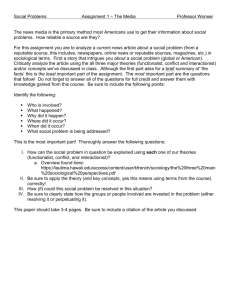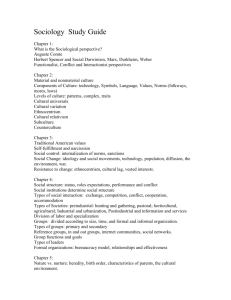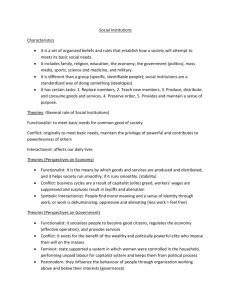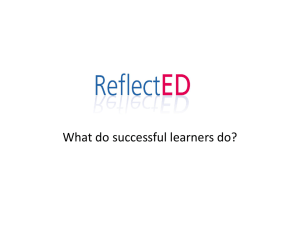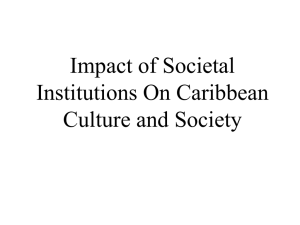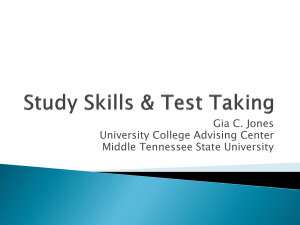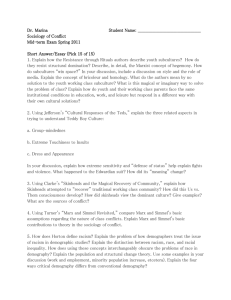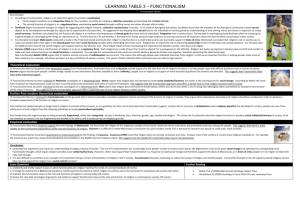14.1 - coachclendenin
advertisement
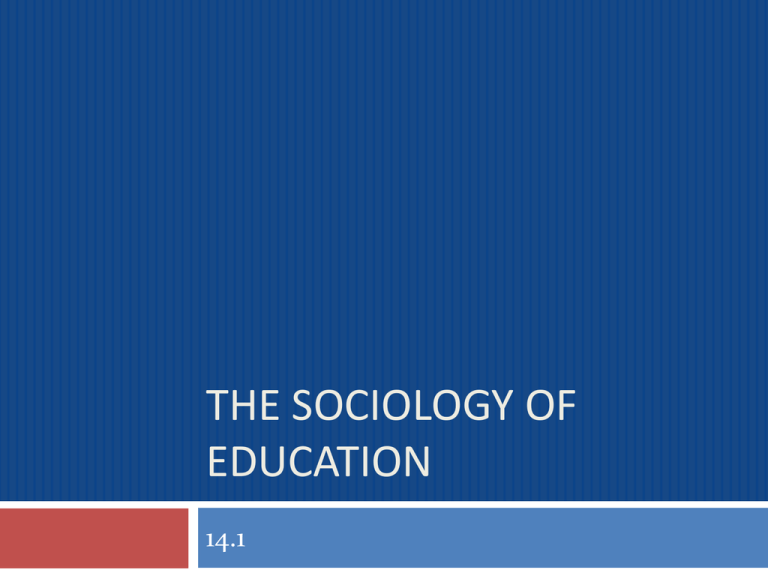
THE SOCIOLOGY OF EDUCATION 14.1 Introduction Society’s future largely depends on the successful socialization of new members Young members must be taught norms and values and skills necessary to continue the work of the older generation Education- consists of the roles and norms that ensure the transmission of knowledge, values, and patterns of behavior to one generation to the next Introduction Preindustrial societies: education is informal and occurs through process of socialization within the family; cooking, pottery making, food gathering, hunting, and fishing More complex societies: the family shares the process of educating the young with formal established organizations Schooling: formal education, which involves instruction by specially trained teachers who follow officially recognized policies Functionalist Perspective Believe that the functions performed by education work to maintain the stability and smooth operation of society Teaching Knowledge and Skills Basic function of education is to teach children the knowledge and skills they will need in the adult world Use language, literature, history, geography, mathematics, science and foreign languages Education serves to generate new knowledge Functionalist Perspective Transmission of Culture: To survive, societies must pass on the core values of their culture to following generations Teach patriotism, loyalty, and socially acceptable forms of behavior American Culture: salute the flag, recite the Pledge of Alliance, stand for National Anthem, freeenterprise system, individualism and democracy Schools teach socially acceptable behavior by teaching children to be punctual, to obey rules, and to respect authority Functionalist Perspective Social Integration: Education serves to produce a society of individuals who share a common national identity “melting pot”- immigrants identities were melted down to form a new, American identity Today: view American society as mosaic- a picture formed by putting together small pieces of tile. Tiles represent separate and distinct people and cultures Functionalist Perspective Occupational Placement: Education often serves to screen and select the members of society for the work they will do as adults United States: Identify and students who show special talents and abilities at an early age Societies assign adult positions on the basis of ascribed status or on the basis of achieved statuses Tested and evaluated Steered toward college-prep courses while others are steered toward vocational courses or other non-college programs Japanese: only admitted to college if they pass entrance exams Very demanding and require large amounts of studying “cram schools”- prepare for the tests “examination war”- national event and have media coverage Future employment depends on the university and scores Conflict Perspective Believe that educational system serves to limit the potential of certain individuals and groups to gain power and social rewards Social Control: serves to produce unquestioning citizens who accept the basic inequalities of the social system Hidden curriculum: school’s transmission of cultural goals that are not openly acknowledged Teaching conservative set of values that center on obedience to authority Goal: to produce cooperative adult workers who will willingly accept the demands of the those in power Conflict Perspective Tracking: the assignment of students to different types of educational programs, such as general studies, vocational training, and college-preparatory studies View tracking as a means by which the wealthy and powerful maintain their position in society Assigned tracks on the basis of intelligence and aptitude test scores, classroom grades, and teacher evaluations Minorities and lower social classes are typically assigned lower tracks Higher tracks: assigned college-track courses geared for college prep and higher paying jobs Lower Tracks: blue-collar vocational jobs with low salaries and prestige Jeanne Oaks: higher –track classes encourage the development of skills related to critical thinking, problem-solving, and creative writing; lower-track: memorization and class room drills Conflict Perspective Educational and Socioeconomic Status Believe that education is the key to social mobility Functionalist: view education as a system that gives all people the chance to succeed according to their own abilities and talents Conflict Sociologists: argue that the opportunities for educational success and social mobility are distributed unequally Education achievement appears to be tied strongly to socioeconomic status Higher status families: assume that their children will succeed at school and therefore tend to motivate them toward the end Lower Status families: hope their children will be successful, but do not necessarily believe education is the key to success Conflict Perspective Higher-status families are better able to provide a home environment well-suited to enrich learning Homes contain books, and toys that stimulate creativity and thought Higher-status families are better able to pay the expenses of putting their children through college Interactionist Perspective Seek to explain social phenomena in terms of the interaction among the individuals involved Rist’s Study: student-teacher interaction in grade school; students put into three groups based on social class– fast, average, and slow learners; fast learners receive more attention and praise than the other learners; at end of year fast learners were performing at a higher level Interactionist Perspective Pederson and Annette Study: power of teacher expectations Teacher encouraged all students, worked with slow learners as much or more then fast learners, stressed the value of education and the importance of hard work Rosenthal and Jacobsen’s Study: tested grade school students; picked at random not the best scorers and showed them more attention and care and they proved to do better than those not selected All three studies provide examples of the self-fulfilling prophecy- a prediction that leads to behavior that the prediction come true---”teachers, through words and actions, let students know what is expected of them, and the students perform according to these expectations
